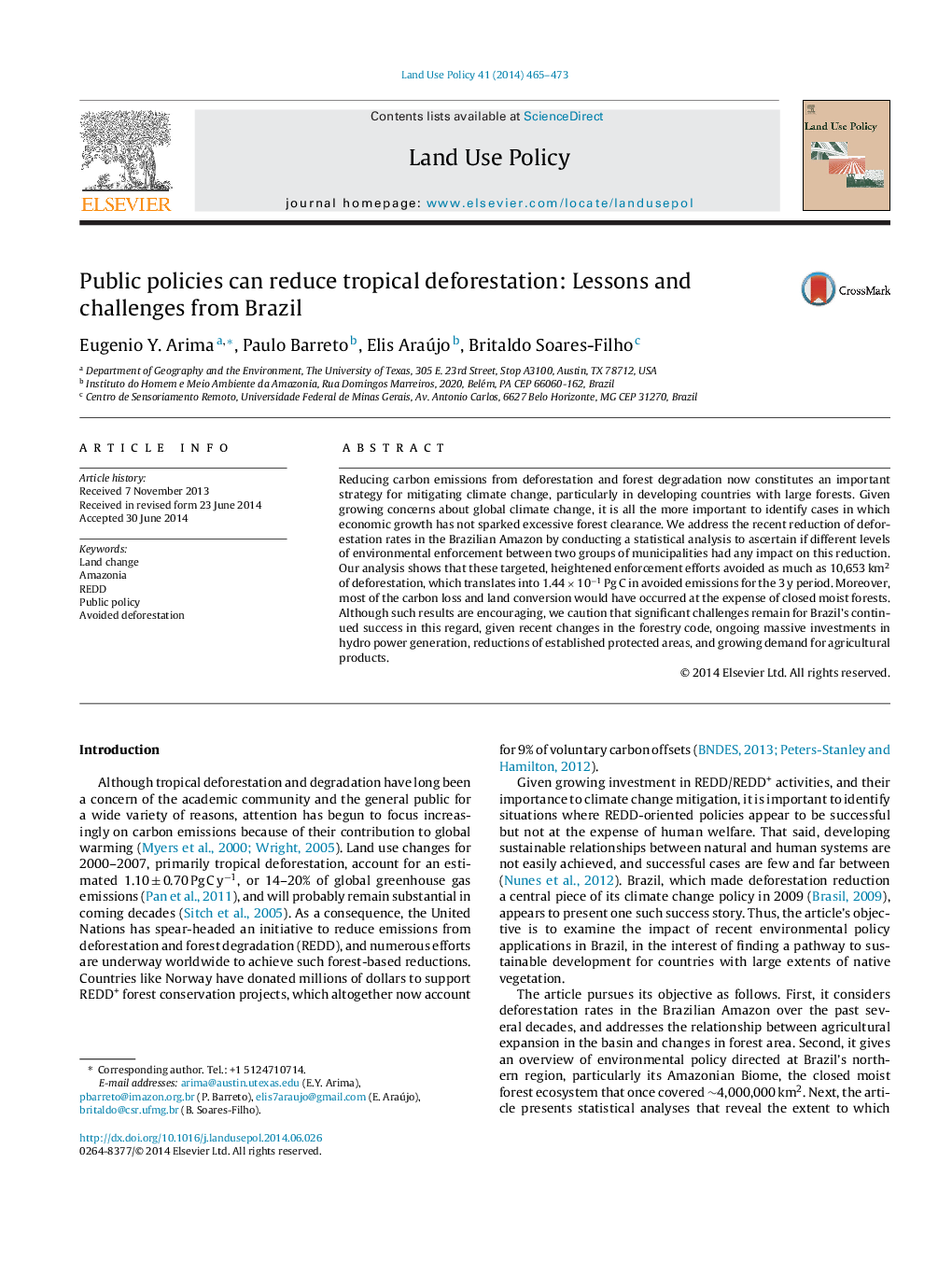| Article ID | Journal | Published Year | Pages | File Type |
|---|---|---|---|---|
| 6548558 | Land Use Policy | 2014 | 9 Pages |
Abstract
Reducing carbon emissions from deforestation and forest degradation now constitutes an important strategy for mitigating climate change, particularly in developing countries with large forests. Given growing concerns about global climate change, it is all the more important to identify cases in which economic growth has not sparked excessive forest clearance. We address the recent reduction of deforestation rates in the Brazilian Amazon by conducting a statistical analysis to ascertain if different levels of environmental enforcement between two groups of municipalities had any impact on this reduction. Our analysis shows that these targeted, heightened enforcement efforts avoided as much as 10,653 km2 of deforestation, which translates into 1.44 Ã 10â1 Pg C in avoided emissions for the 3 y period. Moreover, most of the carbon loss and land conversion would have occurred at the expense of closed moist forests. Although such results are encouraging, we caution that significant challenges remain for Brazil's continued success in this regard, given recent changes in the forestry code, ongoing massive investments in hydro power generation, reductions of established protected areas, and growing demand for agricultural products.
Related Topics
Life Sciences
Agricultural and Biological Sciences
Forestry
Authors
Eugenio Y. Arima, Paulo Barreto, Elis Araújo, Britaldo Soares-Filho,
